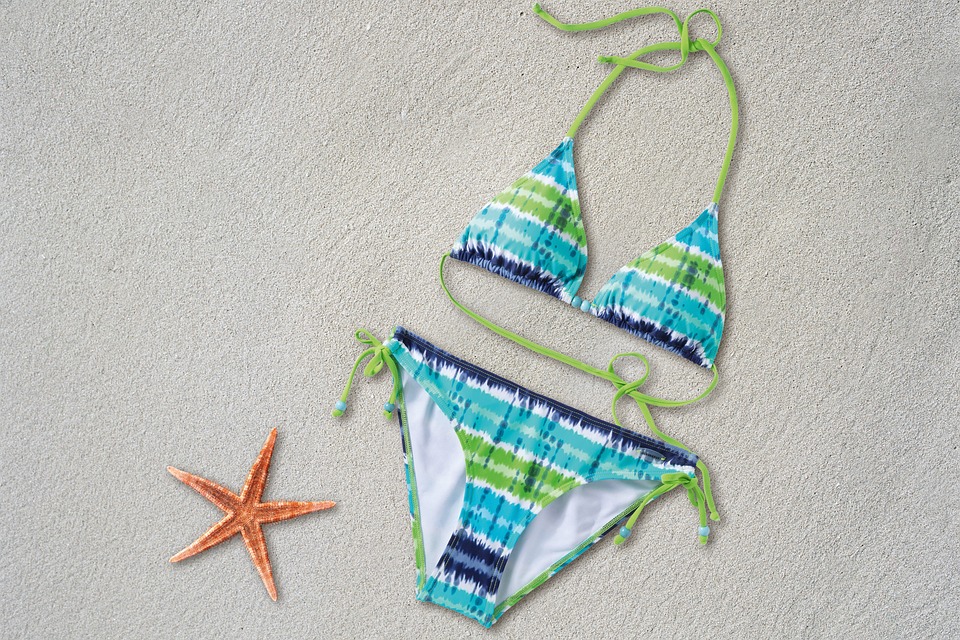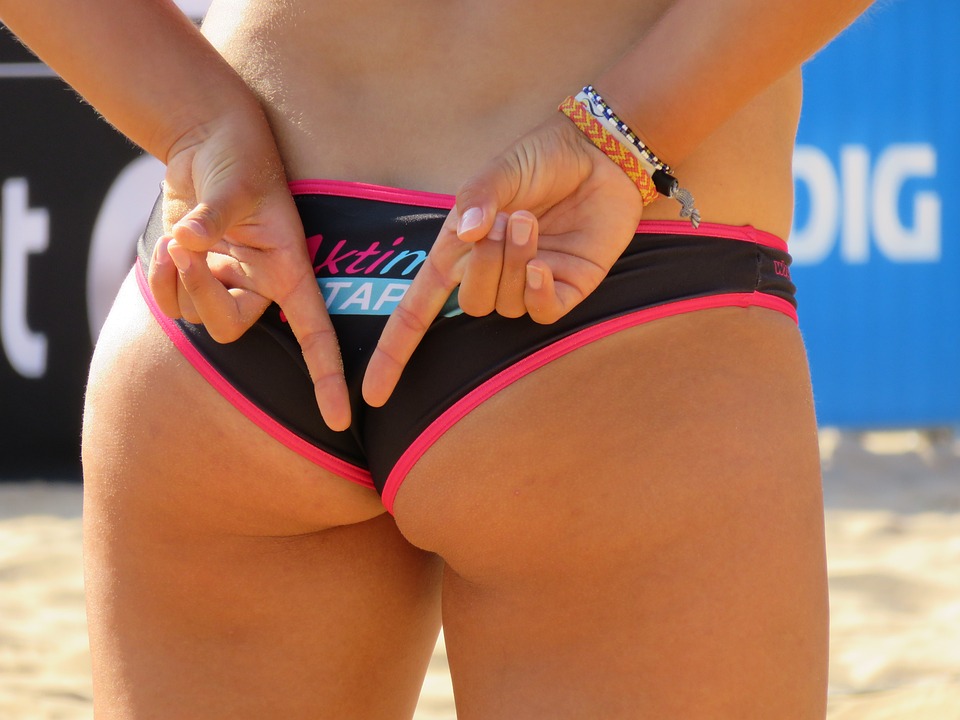The Bikini Line Sore: What Causes It and How to Treat It
As summer approaches, many women are preparing to show off their bikini bodies. However, for some, the thought of wearing a bikini can be daunting due to the possibility of developing a bikini line sore. A bikini line sore is a small, painful bump that can appear along the bikini line after hair removal. In this article, we will discuss what causes bikini line sores and provide tips on how to treat and prevent them.
Causes of Bikini Line Sores
Bikini line sores can be caused by a variety of factors, including:
1. Ingrown Hairs: When hair is removed from the bikini area, it can sometimes grow back into the skin instead of out of it. This can cause a small bump to form, which can become infected and painful.
2. Razor Burn: Shaving with a dull razor or using too much pressure can cause razor burn, which is a red, itchy rash that can be painful and uncomfortable.
3. Waxing: Waxing can sometimes cause small bumps to form along the bikini line. This is because waxing can irritate the skin and cause hair follicles to become inflamed.
4. Friction: Wearing tight clothing or underwear can cause friction along the bikini line, which can lead to irritation and soreness.
Treating Bikini Line Sores
If you develop a bikini line sore, there are several things you can do to treat it:
1. Apply a Warm Compress: Applying a warm compress to the affected area can help to reduce swelling and ease pain. Simply soak a clean washcloth in warm water and place it on the sore for 10-15 minutes.
2. Use an Antibacterial Cream: Applying an antibacterial cream, such as Neosporin, can help to prevent infection and promote healing.
3. Avoid Tight Clothing: Avoid wearing tight clothing or underwear until the sore has healed. This will help to reduce friction and allow the skin to heal.
4. Don’t Pick at the Sore: Picking at the sore can cause it to become infected and can slow down the healing process. Instead, let the sore heal on its own.
Preventing Bikini Line Sores
Preventing bikini line sores is key to avoiding the discomfort and pain that they can cause. Here are some tips to help prevent them from occurring:
1. Exfoliate: Exfoliating the bikini area before hair removal can help to remove dead skin cells and prevent ingrown hairs.
2. Use a Sharp Razor: Using a sharp razor and replacing it regularly can help to prevent razor burn and irritation.
3. Moisturize: Moisturizing the bikini area after hair removal can help to soothe the skin and prevent irritation.
4. Choose the Right Hair Removal Method: Choosing the right hair removal method for your skin type can help to prevent irritation and ingrown hairs. For example, if you have sensitive skin, waxing may not be the best option.
When to See a Doctor
In most cases, bikini line sores will heal on their own with proper treatment and prevention. However, if a sore does not heal or becomes increasingly painful, it may be necessary to see a doctor. Additionally, if you notice any signs of infection, such as redness, swelling, or pus, you should seek medical attention immediately.
Conclusion
Bikini line sores can be a painful and uncomfortable problem for many women. However, by understanding what causes them and how to prevent and treat them, it is possible to enjoy a beautiful bikini body without the discomfort. Remember to always choose the right hair removal method for your skin type, exfoliate before hair removal, and moisturize after hair removal to prevent bikini line sores. If you do develop a sore, be sure to treat it with warm compresses and antibacterial cream, and avoid picking at it. With these tips, you can enjoy a beautiful, bump-free bikini line all summer long.
Commonly Asked Questions Regarding Bikini Line Sore
What is Bikini Line Sore?
Bikini Line Sore is a common condition among women that is characterized by inflammation, irritation, and soreness in the area around the bikini line. This condition is often caused by shaving, waxing, or other hair removal methods that can cause small cuts or razor burn. The symptoms of Bikini Line Sore can range from mild redness and itching to severe pain and swelling.
The three most important facts about Bikini Line Sore are:
1. It is a common condition among women caused by hair removal methods.
2. Symptoms can vary from mild redness and itching to severe pain and swelling.
3. It is essential to take proper care of the affected area to prevent further irritation and infection.
What are the causes of Bikini Line Sore?
The most common causes of Bikini Line Sore are hair removal methods, such as shaving and waxing. These methods can cause small cuts and razor burn, which can lead to inflammation and soreness. Tight clothing, such as thongs and tight pants, can also irritate the area and worsen the symptoms. Poor hygiene, excessive sweating, and bacterial or fungal infections can also cause Bikini Line Sore.
The three most important facts about the causes of Bikini Line Sore are:
1. Hair removal methods, such as shaving and waxing, are the most common causes of Bikini Line Sore.
2. Tight clothing and poor hygiene can also irritate the area and worsen the symptoms.
3. Bacterial or fungal infections can also cause Bikini Line Sore.
What are the symptoms of Bikini Line Sore?
The symptoms of Bikini Line Sore can vary depending on the severity of the condition. Mild cases may have redness and itching, while severe cases may have pain, swelling, and blistering. The affected area may also be tender to the touch and may feel warm or hot. In some cases, pus or discharge may be present, indicating an infection.
The three most important facts about the symptoms of Bikini Line Sore are:
1. Symptoms can vary depending on the severity of the condition.
2. Mild cases may have redness and itching, while severe cases may have pain, swelling, and blistering.
3. In some cases, pus or discharge may be present, indicating an infection.
How can Bikini Line Sore be treated?
The treatment for Bikini Line Sore depends on the severity of the condition. Mild cases can be treated with over-the-counter creams and ointments that contain hydrocortisone or aloe vera. These products can help reduce inflammation and soothe the affected area. Severe cases may require prescription medications, such as antibiotics or antifungal creams, to treat an infection. It is also important to avoid shaving or waxing the affected area until the symptoms have resolved to prevent further irritation.
The three most important facts about the treatment of Bikini Line Sore are:
1. Treatment depends on the severity of the condition.
2. Mild cases can be treated with over-the-counter creams and ointments, while severe cases may require prescription medications.
3. Shaving or waxing the affected area should be avoided until the symptoms have resolved to prevent further irritation.
How can Bikini Line Sore be prevented?
There are several steps that can be taken to prevent Bikini Line Sore. First, it is important to choose a hair removal method that works best for you and your skin type. Shaving in the direction of hair growth, using a sharp razor, and avoiding tight clothing can also help prevent irritation. Proper hygiene, such as washing the area with soap and water and keeping it dry, can also help prevent bacterial or fungal infections.
The three most important facts about the prevention of Bikini Line Sore are:
1. Choosing a hair removal method that works best for you and your skin type can help prevent irritation.
2. Proper hygiene, such as washing the area with soap and water and keeping it dry, can also help prevent bacterial or fungal infections.
3. Shaving in the direction of hair growth, using a sharp razor, and avoiding tight clothing can also help prevent irritation.
Introduction
Bikini line sore is a common skin irritation that occurs in the area where pubic hair grows. It can be caused by various factors such as friction, ingrown hairs, and razor burn. However, there are several myths and misconceptions surrounding this condition that can be misleading and even harmful. In this article, we will discuss some of the most common misconceptions about bikini line sore.
Misconception 1: Bikini line sore is only caused by shaving
One of the most common misconceptions about bikini line sore is that it is only caused by shaving. While shaving can be a major contributor to this condition, it is not the only factor. Bikini line sore can also be caused by waxing, plucking, and even wearing tight clothing. Therefore, it is important to be aware of all the possible causes of this condition.
Misconception 2: Bikini line sore is a sign of poor hygiene
Another common misconception about bikini line sore is that it is a sign of poor hygiene. This is not true. Bikini line sore can happen to anyone, regardless of their hygiene habits. It is simply a skin irritation that can be caused by a variety of factors. It is important to maintain good hygiene practices, but this will not necessarily prevent bikini line sore.
Misconception 3: Bikini line sore is a sexually transmitted disease
Some people believe that bikini line sore is a sexually transmitted disease. This is not true. Bikini line sore is a skin irritation caused by various factors such as friction and ingrown hairs. It is not contagious and cannot be transmitted from one person to another.
Misconception 4: Bikini line sore is a sign of an STD
Another common misconception is that bikini line sore is a sign of a sexually transmitted disease (STD). While some STDs can cause skin irritation in the genital area, bikini line sore is not a symptom of STDs. However, if you are experiencing other symptoms such as itching, burning, or discharge, it is important to get tested for STDs.
Misconception 5: Bikini line sore can be cured with over-the-counter creams
Many people believe that bikini line sore can be cured with over-the-counter creams. While these creams can provide some relief from the discomfort associated with this condition, they will not cure it. The best way to prevent and treat bikini line sore is to practice good hygiene, wear loose clothing, and avoid activities that can cause skin irritation in the pubic area.
Conclusion
In conclusion, there are several myths and misconceptions surrounding bikini line sore. It is important to be aware of these misconceptions in order to properly prevent and treat this condition. Remember that bikini line sore can be caused by various factors and is not a sign of poor hygiene or an STD. If you are experiencing discomfort or other symptoms, it is important to seek medical advice from a healthcare professional.
Bikini Line Sore
#Bikini #Line #Sore


